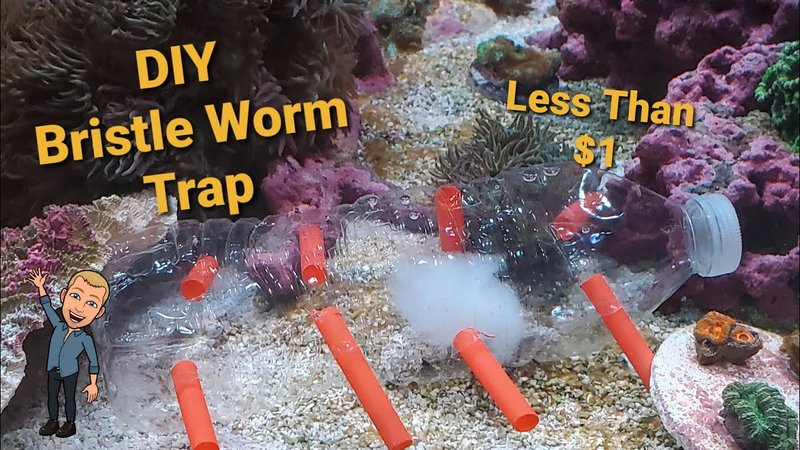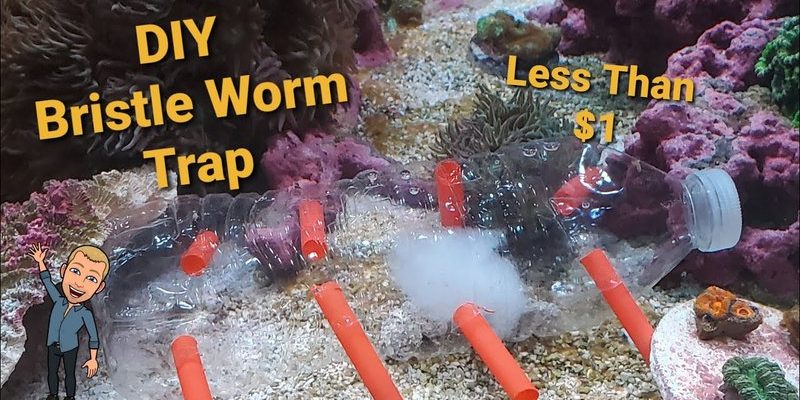
Making DIY traps for bristle worms isn’t as complex as it sounds. In fact, it’s kind of like crafting a little home for them, just to gently usher them out. You don’t need fancy equipment or expensive materials. All you need are a couple of items you might already have at home or can easily pick up from the store. So, let’s dive into the world of safe and effective bristle worm traps that can help you reclaim your aquatic space!
Understanding Bristle Worms and Their Impact
Before we jump into creating traps, let’s take a moment to understand what bristle worms are and why they can become a nuisance. Bristle worms are a type of marine polychaete worm that are commonly found in saltwater tanks and marine environments. They can be beneficial as they help clean up detritus and dead matter, acting as nature’s recyclers. However, if their population grows unchecked, they can pose problems like consuming corals and other important tank inhabitants.
You might be wondering why these little guys become so invasive. Well, they thrive in nutrient-rich environments, which means if you’re overfeeding your fish, you’re indirectly fueling their growth. Think of it like giving your guests all the snacks they want; soon enough, they’ll be hanging around too long! If you have a few too many bristle worms in your setup, it might be time to consider some DIY traps.
Simple DIY Trap Techniques
Creating an effective DIY trap is easier than you might think. Here are two common methods that require minimal materials: a **bottle trap** and a **bait trap**.
Bottle Trap Method
For the bottle trap, you’ll need an empty plastic bottle (like a soda bottle) and some fishing line or string. Here’s how you can do it:
1. **Prepare the Bottle**: Cut the top third of the bottle off. Invert this section and insert it back into the bottom part of the bottle, creating a funnel. This will allow the worms to enter but not exit.
2. **Add Bait**: Place a small piece of shrimp or fish food inside the trap. The smell will attract the bristle worms.
3. **Positioning**: Place the trap in areas where you’ve noticed high activity. Ideally, put it near rocks or in the sand where they like to hide.
Leave the trap overnight, and in the morning, check your catch! You’ll likely find a few bristle worms hanging out in your cleverly designed trap.
Bait Trap Method
If you want to try another approach, consider making a bait trap using a small container, such as a glass jar, and some food. Here’s a quick guide:
1. **Choose Your Container**: A jar works well, and the wider the opening, the better.
2. **Bait It Up**: Add a piece of meaty food, like shrimp or even a bit of fish, into the bottom of the jar.
3. **Set It Up**: Place the jar at the bottom of your aquarium. You can even partially bury it in the substrate to make it enticing for the worms to crawl in.
Just like the bottle trap, check back in a few hours or the next day. It’s a great way to monitor how many bristle worms are in your setup!
Timing and Placement of Your Traps
Once you’ve got your traps set up, timing and placement can make all the difference. You might wonder, “When’s the best time to check?” Generally, placing your traps at night is ideal, as bristle worms tend to be more active after dark.
Also, think about where to position your traps. **Corner areas** and spots **near rocks or coral** are often popular hangouts for these worms. The more you observe their behavior, the easier it will be to find the perfect spot for your traps. Here are some tips for effective trap placement:
– **Regular Monitoring**: Check your traps regularly. This will help you keep an eye on the bristle worm population and adjust your bait as needed.
– **Clean Surroundings**: Keep your tank clean and avoid overfeeding your fish, as this can help reduce future bristle worm issues.
Alternative Methods to Control Bristle Worms
Besides traps, there are other methods to help control worm populations. A few alternatives include:
Natural Predators
Introducing natural predators can effectively keep bristle worms in check. Some fish species, like **wrasses** or **dottybacks**, will actively seek out and eat bristle worms. This method can be quite effective, but make sure to do your research. A new fish might also require special care or have other needs.
Regular Maintenance
Maintaining a regular cleaning schedule can also help. By routinely vacuuming your substrate and doing partial water changes, you’ll keep nutrient levels down, making your environment less favorable for bristle worm reproduction. Remember, a clean tank is a happy tank!
Safe Removal and Prevention Tips
Once you’ve caught some bristle worms with your traps, you’ll need to think about what to do next. One option is to remove them safely. Here are some simple steps:
1. **Release Them**: If you can, consider relocating them to a more suitable environment. If you have access to a natural water body (while adhering to local regulations), this could be an option.
2. **Do Not Kill**: It’s important to avoid killing them directly, especially if you maintain a marine aquarium, as they can play a valuable role in the ecosystem.
To prevent bristle worms from returning, consider these practical tips:
– **Limit Feeding**: Be mindful of how much you feed your fish. Excess food can lead to a bristle worm buffet.
– **Regular Monitoring**: Keep an eye on your tank’s water quality and the overall health of your ecosystem.
Using DIY traps to remove bristle worms safely can make a big difference in keeping your aquarium healthy. By understanding the lifecycle and habits of these creatures, you’ll be better equipped to manage their population without harming your tank. Remember, the goal isn’t just to get rid of them; it’s about balancing your ecosystem.
With a little patience and the right techniques, you can create a thriving environment where both your fish and your newfound bristle worm friends coexist peacefully. So, roll up your sleeves, get those traps ready, and take control of your aquatic space! Happy trapping!

